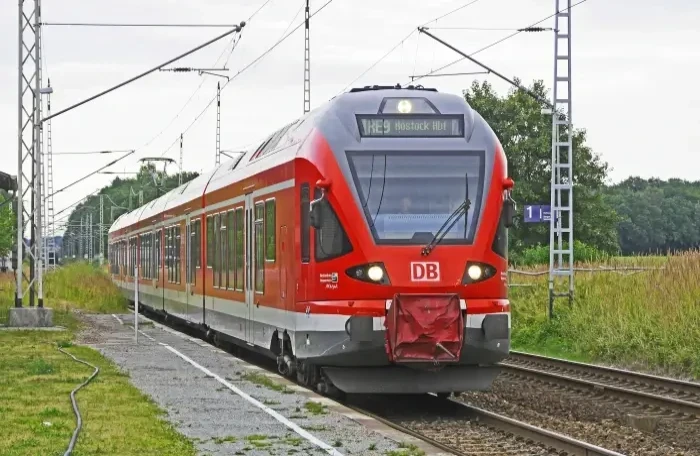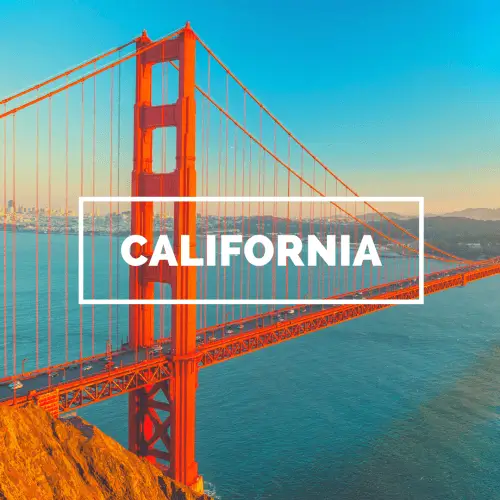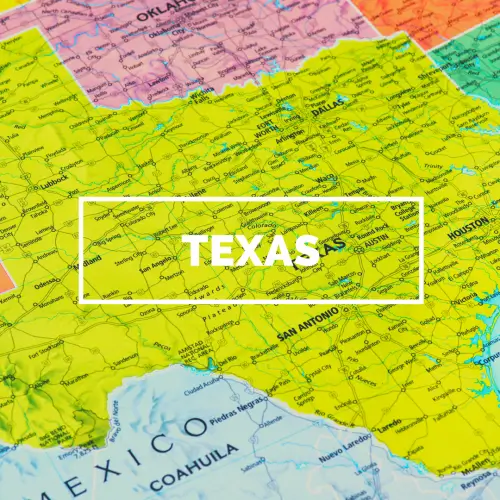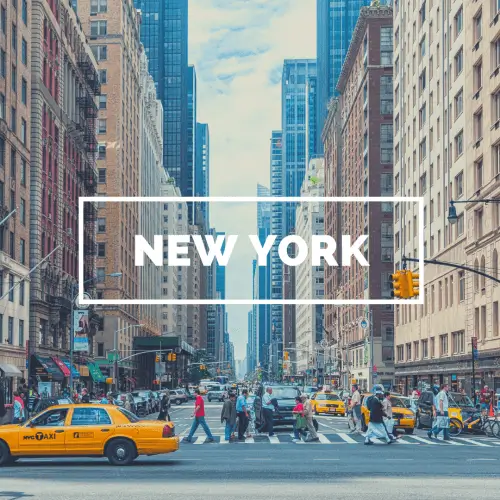The Resurgence of Train Travel
In an era where travelers are growing weary of crowded airports and environmental concerns are driving more eco-friendly choices, train travel is making a resurgence. With its nostalgic charm, scenic views, and modern amenities, trains offer a unique way to experience the journey itself, not just the destination.
This comprehensive guide will explore the pros and cons of train travel, comparing it to flying and driving, and offering insights into what the future holds for this increasingly popular mode of transportation.
Advantages of Train Travel
1. Comfort and Space
Train travel often provides unmatched comfort compared to flying or driving. Spacious seating, ample legroom, and the freedom to move around make long journeys less taxing. On many trains, especially long-distance services, there are dedicated areas for dining, sleeping, and even quiet zones for uninterrupted work or relaxation.
Trains like the Amtrak Acela Express in the U.S. and the TGV in France offer business-class seating with larger tables, power outlets, and Wi-Fi, making them ideal for digital nomads or business travelers.
Why it matters: Train passengers can stretch their legs, walk around, and relax during the journey, making it a more comfortable option for longer trips.
2. Scenic Views and Relaxation
One of the most unique aspects of train travel is the incredible, often breathtaking scenery. Trains take you through landscapes that are otherwise inaccessible by car or plane, offering panoramic views of mountains, valleys, rivers, and even historic towns. Imagine traveling through Switzerland aboard the Glacier Express—you’ll pass through snow-capped peaks, lush green valleys, and charming alpine villages, all from the comfort of your seat.
Similarly, in the U.S., routes like the Amtrak Coast Starlight provide awe-inspiring views of the Pacific coastline, vast forests, and towering mountains, allowing you to witness nature’s beauty unfold with every mile. The changing landscape creates a dynamic travel experience that makes the journey itself a memorable part of your trip.
Why it matters: For those who prefer to relax and enjoy the scenery instead of navigating traffic or staring at clouds from a plane, train travel offers a tranquil, immersive experience.
3. Nostalgia and the Timeless Experience of Train Travel
Train travel evokes a sense of nostalgia, harkening back to a time when the journey was as important as the destination. In literature and films, trains have been romanticized for their slower pace and the sense of adventure they inspire. Famous travelers like Mark Twain and Agatha Christie often wrote about the allure of long train journeys, and even today, that charm persists.
Many passengers enjoy the unique experience of being on a train, where they can interact with fellow travelers, take leisurely walks through the cars, or simply gaze out at the passing scenery. Unlike the rushed, utilitarian experience of air travel, trains offer a chance to slow down and connect with the journey itself.
Why it matters: Train travel offers a timeless, less stressful experience that allows passengers to enjoy the ride, creating a deeper connection to the places they’re traveling through.
4. Environmentally Friendly Travel
Train travel stands out as one of the most eco-friendly transportation options. Trains, especially electric and high-speed ones, use significantly less energy per passenger compared to cars and airplanes. According to the International Energy Agency (IEA), high-speed rail can reduce CO2 emissions by up to 90% compared to car travel over similar distances.
The European Environment Agency (EEA) reports that rail travel emits just 14 grams of CO2 per kilometer per passenger, compared to 285 grams for airplanes. With growing global focus on reducing carbon footprints, the shift toward rail is a crucial step in creating a more sustainable transportation future.
Why it matters: For environmentally conscious travelers, trains offer a low-impact way to travel, reducing carbon emissions and contributing to sustainability efforts.
5. Cost Comparison: Trains vs. Planes vs. Cars
When comparing train travel to flying or driving, trains often offer a more affordable option, particularly for short to mid-range distances. This is especially true when factoring in the cost of fuel, tolls, parking, and airfare. In addition, train ticket prices tend to be more predictable and stable, with fewer price surges during peak travel times.
For example, on the New York to Washington, D.C. route, a one-way train ticket averages $60, while flights range from $120 to $150. Driving the same distance costs approximately $40 in fuel and tolls, but also involves parking fees and the stress of navigating traffic.
Why it matters: For budget-conscious travelers, train travel can be a cost-effective alternative, especially on routes where flying is prohibitively expensive or inconvenient.
6. Unique Amenities and Modern Conveniences
Modern train services have come a long way, offering a variety of amenities that make traveling by train more convenient than ever before. High-speed trains like Japan’s Shinkansen or Europe’s Eurostar offer Wi-Fi, power outlets, and comfortable seating designed for long-distance travelers and digital nomads.
Long-distance trains like the Amtrak California Zephyr not only provide stunning scenic views, but also feature sleeper cars, dining cars with fresh meals, and even observation lounges for panoramic views of the landscape. These services cater to both leisure and business travelers, offering comfort and modern conveniences throughout the journey.
Why it matters: The availability of unique amenities, such as quiet zones, dining cars, and sleeper cabins, makes train travel an appealing option for travelers seeking a blend of comfort and practicality.
7. Less Hassle with Security
Unlike airports, train stations are free from the long lines and stringent security checks that often accompany air travel. While some long-distance or international train services may have minimal security screening, it’s generally far less invasive than at airports. This means that you can typically arrive at the station shortly before your departure time and board your train without any significant delay.
Why it matters: For travelers who want to avoid the stress of airport security and enjoy a more relaxed start to their journey, train travel offers a hassle-free alternative.
8. Convenient City-to-City Connections
Many train stations are located in the heart of major cities, providing seamless access to public transportation and nearby attractions. In contrast, airports are often situated far from city centers, requiring additional travel time and expense to reach your final destination.
In Europe, trains like the Eurostar link cities like London, Paris, and Brussels directly, making cross-country travel easier and faster than ever. Similarly, Japan’s extensive rail network connects bustling cities like Tokyo and Osaka with remote cultural destinations, providing easy access to both urban and rural areas.
Why it matters: Trains make city-to-city travel more efficient, particularly for short distances where flying or driving would add unnecessary time and hassle.
Disadvantages of Train Travel
1. Slower Travel Times Compared to Air
While high-speed trains can cover shorter routes quickly, they are generally slower than airplanes for long-distance travel. For example, a train journey from New York to Chicago on the Amtrak Lake Shore Limited takes approximately 19 hours, compared to a 2-hour flight.
Why it matters: If speed is your top priority for long-distance travel, flying remains the most time-efficient option, especially for trips that span multiple states or countries.
2. Limited Route Availability and Flexibility
Train networks, particularly outside of Europe and Japan, can have limited routes and schedules. In the U.S., for example, Amtrak’s network covers many major cities, but it lacks the extensive reach of European rail systems, and some routes operate infrequently. In countries with less-developed rail infrastructure, passengers may find fewer options, which can make train travel less convenient.
Additionally, the fixed schedules of trains offer less flexibility for last-minute travelers. While airlines and car rentals may provide more flight times or flexible options, some trains operate only once a day, limiting spontaneous travel.
Why it matters: If you need flexibility in your travel schedule, or if you’re traveling to a destination without robust rail connections, trains may not be the most convenient option.
Tip: Apps like Eurail and Interrail offer passes that allow for flexible travel across European countries, which can help travelers navigate limited schedules and route availability.
3. Unpredictable Delays and Cancellations
Though train travel is generally reliable, it is not immune to delays. Weather conditions, mechanical issues, or track maintenance can cause disruptions, sometimes leading to significant delays or cancellations. In less-developed rail networks, overcrowded tracks shared by freight and passenger trains can cause delays, especially on longer routes.
For example, in the U.S., Amtrak’s services can occasionally experience delays due to shared rail lines with freight trains, which take priority. Such unpredictability can disrupt your travel plans and create unnecessary stress.
Why it matters: If timely arrivals are critical for your journey, it’s essential to account for potential train delays or have a backup plan in place.
4. Lack of Amenities on Some Services
While many long-distance and high-speed trains offer modern amenities like Wi-Fi, dining cars, and sleeper cabins, some regional or older trains may have fewer features. Short-distance commuter trains or budget services might not offer the same level of comfort, and amenities can be limited to basic seating without any access to food or drinks.
Why it matters: Not all train services provide the same level of comfort or amenities, so it’s important to check what’s available on your specific route before booking.
5. Inconvenient Access to Train Stations
While many train stations are centrally located in urban areas, others—particularly in rural or suburban regions—may be harder to access. If you’re traveling in the U.S., for example, some Amtrak stations are located outside of town centers, requiring additional transportation to reach your final destination.
This can add to your overall travel time, negating some of the convenience that train travel is known for.
Why it matters: Consider the location of the train station relative to your destination, as it could impact the overall efficiency of your travel plans.
Environmental Impact of Train Travel vs. Air Travel
One of the key benefits of train travel is its significantly lower environmental impact compared to other forms of transportation. Trains, particularly electric ones, are far more energy-efficient than cars or airplanes.
According to the European Environment Agency (EEA), air travel emits around 285 grams of CO2 per passenger per kilometer, compared to just 14 grams for rail travel. This makes rail travel nearly 95% more eco-friendly on a per-passenger basis over the same distance.
Additionally, trains consume far less energy than airplanes. The International Energy Agency (IEA) reports that rail transport uses up to 75% less energy per passenger kilometer compared to air travel. These statistics underscore the sustainability of trains, especially when factoring in electric and high-speed services, which are powered by renewable energy in many countries.
In countries like France and Japan, where the majority of trains run on electricity, the impact is even lower. As more nations continue to invest in rail infrastructure, the environmental benefits of train travel will only grow.
Why it matters: Train travel is an excellent choice for eco-conscious travelers seeking to minimize their carbon footprint.
Future Trends in Train Travel
The future of train travel looks promising, especially as more countries invest in high-speed rail networks and electrification. Due to increasing concerns over climate change and rising fuel costs, governments around the world are recognizing the importance of sustainable transportation systems.
1. Expansion of High-Speed Rail Networks
Countries like China, Japan, and France are at the forefront of high-speed rail technology. In the coming years, more regions—including the U.S.—are expected to develop high-speed rail lines. Projects such as the proposed California High-Speed Rail and the Texas Bullet Train are set to significantly reduce travel times between major cities, making train travel more competitive with flying.
2. Growing Electrification of Rail Systems
As more nations commit to reducing carbon emissions, electrification of rail systems is expanding rapidly. The European Union has set goals for a fully electrified rail network by 2050, and other countries are following suit. This shift to electric trains will further decrease the environmental impact of rail travel.
3. Technological Innovations
In the near future, we may see the emergence of even faster and more efficient train technologies. Concepts like Maglev (magnetic levitation) trains, which use magnetic fields to levitate and propel trains at ultra-high speeds, could revolutionize long-distance travel. These trains, already in limited use in Japan, can reach speeds of up to 375 mph and promise zero-emissions transport.
Why it matters: As high-speed rail expands and new technologies emerge, train travel will become an even more attractive option for fast, efficient, and sustainable transportation.
Making the Right Choice for Your Travel Needs
Train travel offers a unique blend of comfort, affordability, and sustainability, making it an increasingly popular choice for travelers. Whether you're looking for a relaxed, scenic journey through the countryside or an eco-friendly alternative to flying, trains provide a compelling option.
However, it's important to weigh the pros and cons based on your specific needs—whether it's speed, cost, or flexibility. For many short- to mid-range trips, trains strike the perfect balance, while flying may still be the best option for longer distances or time-sensitive travel.
And if you’re planning a road trip but don’t want the hassle of driving long distances, consider shipping your vehicle with AmeriFreight while you enjoy a stress-free train journey.
Common Questions About Train Travel
Are There Luggage Restrictions on Trains?
Unlike airlines, trains generally have more lenient luggage policies. For instance, Amtrak allows passengers to bring two carry-on bags and two checked bags for free on most routes. European train services, such as Eurostar, also offer generous luggage allowances, making train travel a more convenient option for those traveling with heavy baggage.
How Comfortable Are Overnight Train Journeys?
Overnight trains can be a comfortable and enjoyable experience, especially when traveling on routes with sleeper cars. For example, Amtrak’s California Zephyr offers private sleeper cabins with beds, en-suite bathrooms, and access to a dining car. European services like the Caledonian Sleeper between London and Scotland provide luxury accommodations with private suites and comfortable beds, making overnight travel both practical and comfortable.
Can I Take My Bike on a Train?
Yes, many train services allow passengers to bring bicycles, though specific policies vary by country and operator. In the U.S., Amtrak permits bikes on many routes, either in dedicated bike racks or as checked luggage for a small fee. Similarly, European services like SNCF allow bikes on many trains, with options for storage based on availability.
Is Wi-Fi Available on Trains?
Yes, many modern trains, especially high-speed and long-distance services, offer Wi-Fi. For example, Amtrak provides free Wi-Fi on many of its routes, including major lines like the Acela Express. In Europe, services like Eurostar and TGV also offer Wi-Fi, though it may be limited in remote areas or tunnels.
Is Train Travel Safe?
Train travel is considered one of the safest forms of transportation. According to the Federal Railroad Administration, train accidents are extremely rare, and safety measures continue to improve. Modern rail services are equipped with advanced safety features, including automatic braking systems and enhanced track monitoring technologies.
By choosing train travel, you not only experience a stress-free journey but also contribute to a more sustainable future. Whether it's the nostalgic charm, the scenic views, or the eco-friendly benefits, trains offer an unparalleled way to travel that allows you to savor the journey itself. With a wide array of routes, unique amenities, and the promise of a lower environmental impact, train travel is a choice worth considering for both short and long-distance trips.
As high-speed rail networks continue to expand and new technologies emerge, the future of train travel looks brighter than ever, offering travelers even more options for fast, comfortable, and eco-friendly transportation.
No matter where you're headed, making the most informed travel decision—whether by train, plane, or car—will ensure that your journey is as enjoyable as the destination itself.
And if you’re planning to ship your vehicle while you enjoy a relaxing train ride, look no further than AmeriFreight for reliable and affordable car shipping services.
Is Train Travel Environmentally Friendly?
Yes, train travel is one of the most environmentally friendly modes of transportation. As mentioned earlier, trains produce significantly less CO2 per passenger compared to airplanes or cars. The European Environment Agency (EEA) reports that rail travel emits up to 95% less carbon dioxide per passenger-kilometer compared to flying. Many countries are investing in electrified train systems, further reducing the carbon footprint and making rail travel an increasingly sustainable option.
What Are the Best Train Routes for Scenic Travel?
Some of the most scenic train routes in the world include:
Glacier Express (Switzerland): Known as one of the most scenic train journeys in Europe, the Glacier Express takes passengers through the Swiss Alps, passing through valleys, mountains, and picturesque villages. The panoramic windows allow for unobstructed views of the stunning landscapes.
Amtrak Coast Starlight (U.S.): This iconic route runs along the Pacific Coast, from Los Angeles to Seattle, offering views of the ocean, forests, and mountain ranges. It’s considered one of Amtrak’s most scenic journeys.
Belmond Andean Explorer (Peru): For those seeking adventure in South America, the Belmond Andean Explorer takes passengers through the high plains of Peru, offering breathtaking views of the Andes mountains and Lake Titicaca.
Rocky Mountaineer (Canada): This luxury train route traverses the Canadian Rockies, providing passengers with stunning views of forests, mountains, and lakes. It’s famous for its glass-domed cars that offer panoramic views of the wilderness.
These routes are perfect for travelers looking to combine the convenience of train travel with the beauty of nature.
Can I Bring Pets on Trains?
Policies on bringing pets vary by train service and country. In the U.S., Amtrak allows small pets on many of its routes, though there are restrictions on size and weight. In Europe, several train operators, including SNCF, allow pets, with varying fees and requirements depending on the animal’s size. Always check the pet policy before booking your trip to ensure your furry friend can come along.
Final Thoughts
Train travel offers a unique and rewarding experience for those who value comfort, scenery, and sustainability. As the rail industry continues to evolve with greener technologies and expanded routes, it’s becoming an increasingly viable option for both leisure and business travelers. Whether you’re seeking a scenic adventure or simply a stress-free way to reach your destination, trains provide an appealing alternative to flying or driving.
By weighing the advantages and disadvantages, you can make the best travel decision for your next journey. And if your plans involve driving to your destination but you’d rather not make the long haul, remember that AmeriFreight can safely and affordably transport your vehicle, allowing you to sit back and enjoy the ride by train.














